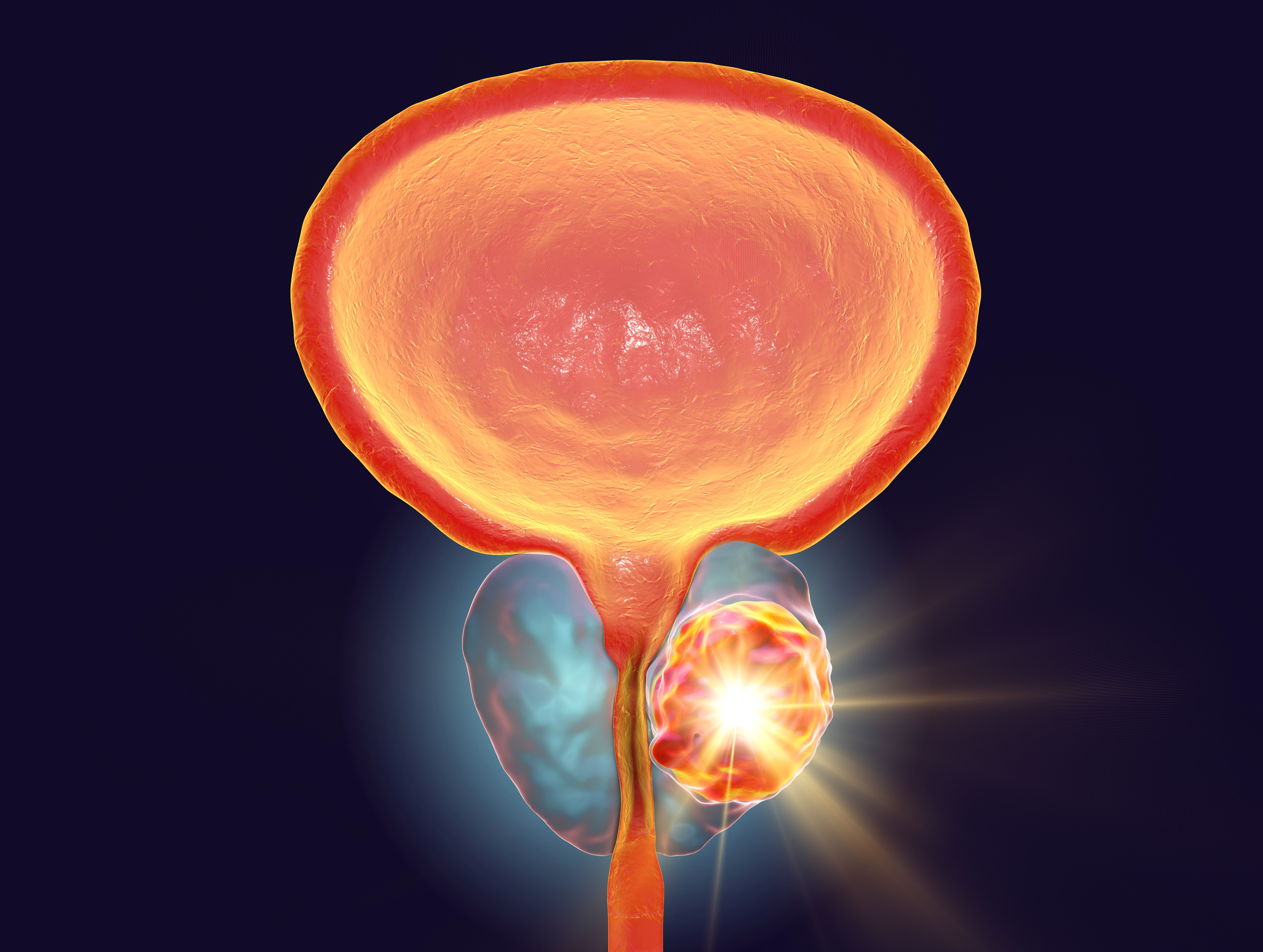AI-Assisted Contours Exhibit High Accuracy in Evaluating Prostate Cancer
Compared with cognitively-defined and hemigland contours, AI-assisted cancer contours delivered a greater balanced accuracy rate.
Compared with cognitively-defined and hemigland contours, AI-assisted cancer contours delivered a greater balanced accuracy rate.

Artificial intelligence (AI)–assisted cancer contours exhibited high accuracy in evaluating prostate cancer, thereby improving a physician’s ability to identify prostate cancer extent, according to findings from a multireader, multicase study published in The Journal of Urology.
Balanced accuracy, defined as the mean of voxel-wise sensitivity and specificity, was greater for AI-assisted cancer contours (84.7%) than cognitively-defined (67.2%) and hemigland cancer contours (75.9%; P < .0001). Additionally, AI-assisted contours expressed greater mean negative margin rates (72.8%) than cognitively-defined (1.6%) cancer contours (P <.001). The negative margin rate difference between AI-assisted and hemigland cancer contours (72.8% vs 86.0%; P = 0.7) was not statistically significant.
Further results showed that AI-assisted contours had greater mean sensitivity than cognitively-defined contours (97.4% vs 38.2%, P <.001) and required less time to produce (2.0 minutes vs 3.5 minutes; P <.001). Additionally, greater specificity was attained in AI-assisted cancer contours than hemigland contours (72.1% vs 53.4%, P < .001).
“Given access to standard clinical information, physicians tended to err toward small ‘high-specificity’ contours that fail to encapsulate the entire tumor. This likely occurred as physicians relied on a tumor’s MRI appearance, but the true extent of prostate cancer is often MRI invisible,” wrote the authors of the study. “AI was significantly more accurate than hemigland and standard-of-care [SOC] contours, indicating a better balance between sensitivity and specificity. Furthermore, exposure to AI software encouraged physicians to define larger and more patient-specific contours, improving the negative margin rate.”
Of 124 cases, 50 eligible ones were interpreted by 7 urologists and 3 radiologists with a mean of 9 years of experience (range 2-23). Initially, each reviewer produced cognitive SOC cancer contours via manual delineation following a chart review of conventional diagnostic data. A 4-week washout period was implemented to minimize reader recall of the prior cancer contour before a second AI-assisted reading was undertaken. Cases were anonymized, case identifiers and reader order were randomized between contouring sessions, and task duration was recorded in a logbook following contour completion.
SOC cancer contouring was conducted with T2-weighted MRI, prostate cancer contours, and regions of interest (ROIs) were preloaded to open-source medical imaging software, 3D Slicer. Readers utilized 3D Slicer’s “Segmentation Editor” module to manually delineate cancer contours.
For AI-assisted cancer contouring, the same data were preloaded to the AI software, with readers accessing the same text-based biopsy reports from the SOC cancer contouring phase. T2-weighted MRI, simulated 3D biopsy core locations, prostate-specific antigens (PSAs), and biopsy grade groups (GG) comprised the AI software inputs. A 3D cancer estimation map (CEM) was generated by the AI software, as well as an encapsulation confidence score to code each prostate voxel with the probability of residual clinically significant prostate cancer (csPCa) and to estimate the probability that a contour would completely encapsulate all csPCa, respectively.
Additionally, a default cancer contour, which maximizes encapsulation confidence while minimizing contour volume, was automatically selected by the software and displayed to readers. Readers then selected a threshold using the encapsulation confidence curve to apply to the CEM for each case, by which the AI software produced a 3D cancer contour. The CEM was converted into cancer contours comparable with SOC-defined or hemigland contours.
A subset of readers recommended a treatment strategy after each contouring measure, which included a selection of active surveillance, radical prostatectomy, radiation therapy, or focal therapy (FT).
Results consisted of 10 sets of 50 matched cancer SOC, AI-assisted, and hemigland contours, as well as contouring durations for SOC and AI-assisted ones. The overlap between ground-truth csPCa regions and each cancer contour computed sensitivity and specificity.
Inclusion criteria for eligible FT cases included a GG of 2 or 3, at least 1 magnetic resonance-visible ROI, unilateral csPCa confined to the anterior zone, and no previous prostate cancer treatment. Additionally, all patients included in the dataset had received presurgical multiparametric MRI.
References
Mota SM, Priester A, Shubert J, et al. Artificial intelligence improves the ability of physicians to identify prostate cancer extent. J. Urol. 2024;212(1):52-62. doi: 10.1097/JU.0000000000003960
Prolaris in Practice: Guiding ADT Benefits, Clinical Application, and Expert Insights From ACRO 2025
April 15th 2025Steven E. Finkelstein, MD, DABR, FACRO discuses how Prolaris distinguishes itself from other genomic biomarker platforms by providing uniquely actionable clinical information that quantifies the absolute benefit of androgen deprivation therapy when added to radiation therapy, offering clinicians a more precise tool for personalizing prostate cancer treatment strategies.